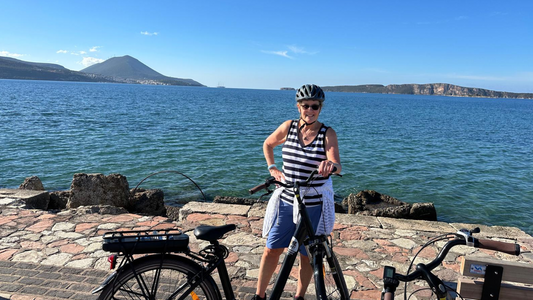

How To Recover From Leg Day: 8 Helpful Tips
You know the drill: You pushed yourself to the limit on leg day and now you have the sore calves to prove it. The goal of this guide from ZOZOFIT is to show you how to recover from leg day as quickly and comfortably as possible.
How To Recover From Leg Day: Muscle Soreness Explained
Some tenderness is normal after an intense session of resistance training. It’s a sign of tiny muscle tears. As the body repairs those microscopic injuries, your muscle tissue becomes stronger.
In other words, delayed onset muscle soreness is a sign that you’re building new muscle. Your body is adapting to your workout so the next time you can hit those reps more easily.
Helping your muscles recover from leg day involves supporting your body’s own healing processes. By following good habits and avoiding common obstacles, you give your muscles a chance to recover.
How To Help Your Muscles Recover After Leg Exercises
You don’t need expensive supplements or trendy cleanses to keep your muscles in great shape. You can support a healthy fitness routine at home with these simple leg day tips.
1. Drink Plenty of Water
A cool glass of water feels like heaven after high-intensity exercise, but that’s not the only reason to stay hydrated. It’s also good for your muscles.
Water flushes away toxins, helps you avoid overheating and delivers important nutrients where they need to go. On the other hand, dehydration can slow down muscle repairs.
An important part of learning how to recover from leg day is remembering to replenish lost fluids. High-intensity training can make you sweat. Your water needs increase on the days that you work out.
2. Let Your Legs Rest
Trying to fight fire with fire doesn’t work. When your muscles are sore, trying to push them through the pain isn’t the answer. You need to give your legs a chance to recover naturally. At the very least, let your legs rest for 24 hours before exercising them again. Many fitness pros wait two or three days.
3. Stay Active
Even though you’re taking a break from high-intensity leg workouts, you can still enjoy cardio or work on other muscle groups. For example, you may squeeze in some swimming, focus on your core or go for a leisurely walk. A light workout can help reduce muscle pain and inflammation, besides the benefits of getting some fresh air.
4. Get a Good Night’s Sleep
Your body needs sufficient sleep to maximize its natural healing powers. While you’re dreaming of how to recover from leg day, your muscles have a chance to rest, repair and recover.
It’s a good thing that leg day drains you physically and gets you in the mood to snooze. Don’t fight it. Let yourself sleep like a baby all night long.
On the flip side, poor sleep is detrimental to muscle recovery. Staying up late or tossing and turning all night raises your stress levels the next day. This can trigger more inflammation and make your whole body feel sore.
5. Warm Up Properly
One way how to recover from leg day is related to what you do before you start. Jumping cold turkey into leg day squats isn’t always the best idea. Instead, give your muscles time to warm up — and cool down after.
Warming up boosts blood flow to your legs and gets your body ready for action. This simple habit may help you avoid injuries and potentially reduce the amount of soreness you feel after leg day.
The idea is to do the same leg exercises you normally do, but more slowly and gently. Before jogging, for example, start with a brisk walk for five to 10 minutes. Gradually increase pace and intensity until you’re good to go.
6. Try Massage Techniques
Scientists aren’t sure if massaging your muscles can speed up your recovery time after leg day. That said, a gentle massage sure feels good for aching muscles. The process can release endorphins, the body’s natural painkillers. Getting a massage can also help you feel more relaxed and rested.
How To Recover From Leg Day With Healthy Foods
There’s no magic supplement or ingredient that makes muscle soreness disappear, but nutritious foods and a balanced diet can get you back on your feet quickly.
7. Give Your Body Enough Protein
Muscles depend on protein for repairs. Many athletes consume protein on leg day to help with recovery and muscle growth. You have lots of options for nutritious sources of lean protein:
- Tilapia, halibut, cod, bass and haddock
- Skinless chicken breast and turkey breast meat
- Shrimp
- Lentils, beans and peas
- Eggs (especially egg whites)
- Low-fat dairy, including milk, Greek yogurt and ricotta cheese
- Nuts and low-fat peanut butter
Some people like to use protein powder, but it’s completely up to you. Whey protein is easy to add to fruit smoothies for a post-workout treat.
8. Eat Colorful, Nutritious Foods
Many antioxidants, vitamins and minerals are involved in tissue repairs, such as vitamin C, magnesium, iron and zinc. Colorful fruit and veggies are rich in antioxidants, so make sure you’re getting plenty of greens, reds, yellows and purples in your weekly meals:
- Tart cherries
- Watermelons
- Pomegranates
- Beets
- Leafy green veggies
- Bell peppers
- Sweet potatoes
You can get these important nutrients from a normal, healthy diet, ensuring that your body has the building blocks it needs for new muscle tissue.
Keep in mind that every person is different, so recovery techniques that work great for you may not be as effective for other people. Always listen to your body and your doctor’s recommendations.
How To Recover From Leg Day: Great Goals
You have every reason to be proud of yourself for taking your fitness to the next level. Once you know how to recover from leg day, the soreness usually only lasts two or three days, but the benefits you get from working out last much longer. Don’t give up. Pursue your fitness goals and achieve them, and be sure to use the ZOZOFIT app to help you track your results effortlessly.

![zf-w-[168px] zf-h-[40px]](http://zozofit.com/cdn/shop/t/15/assets/logo-desktop.png?v=117713855448369080381753069598)




